La Guitarra Clásica
La Guitarra Clásica
Antonio de Torres Jurado, el carpintero Español del siglo XIX, es el nombre asociado con la forma moderna de la guitarra clásica. Cuenta la leyenda que Torres se inspiró en la figura de una joven doncella Sevillana. No es precisamente un lo que llamaríamos un enfoque científico, pero, sin dudas, la leyenda ha venido para quedadarse. Las guitarras de Torres fueron las primeras guitarras grandes, sobre todo si se comparan con las que se veían en su época. Una caja armónica más grande, se traduce en un sonido más grande. El diseño de guitarra al estilo de Antonio de Torres, ha sido el modelo para los constructores de guitarras durante la mayor parte de los últimos 100 años. 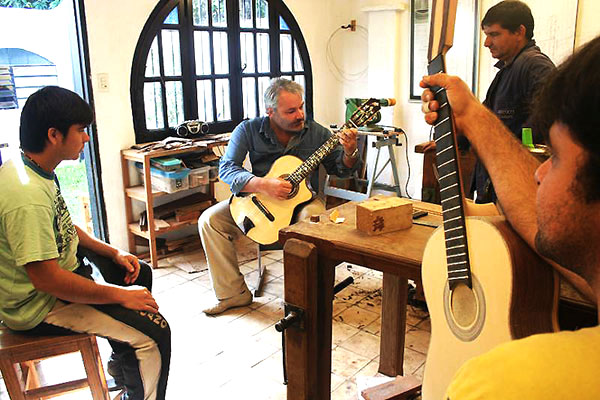 Renato Bellucci tocando para sus luthiers
Renato Bellucci tocando para sus luthiers
La guitarra está hecha de un material viviente, la madera, y, como todo material viviente, no existen dos guitarras iguales.
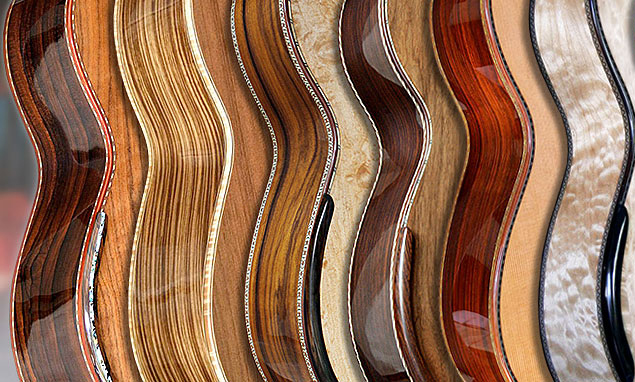
Renato Bellucci ha utilizado más de 45 especies diferentes de Maderas para la fabricación de sus guitarras de concierto Lee Más Aquí.
La oscilación de las cuerdas actúa como un péndulo, y cada cuerda crea un patrón de vibración muy complejo y único. Para complicar más las cosas, cada cuerda oscila de forma diferente a las otras debido al diferente espesor de las mismas. Cada vez que tocas Mi en la sexta cuerda, la guitarra se infla como un globo. La tapa del istrumento y el fondo de la guitarra se acercan y se alejan entre sí en términos de micras por segundo. Cuanto más altas o bajas son las frecuencias que se producen, diferentes partes de la tapa armónica vibrarán en consecuencia. Las varillas encoladas a la parte inferion de la tapa armónica, dividen y encausan las antemencionadas vibraciones, permitiendo que diferentes partes de la tapa vibren de acuerdo con la cuerda y nota pulsada. A esto se le llama "separación de voces" y es una prestación muy deseada por los concertistas. Al conjunto de las varillas se le denomina "el abanico".
La guitarra es un instrumento relativamente simple. Algunas partes de la construcción, como dar forma al mástil y a la cabeza, afinar la tapa y entonar cada varilla, requieren talento, práctica y mucha experiencia.
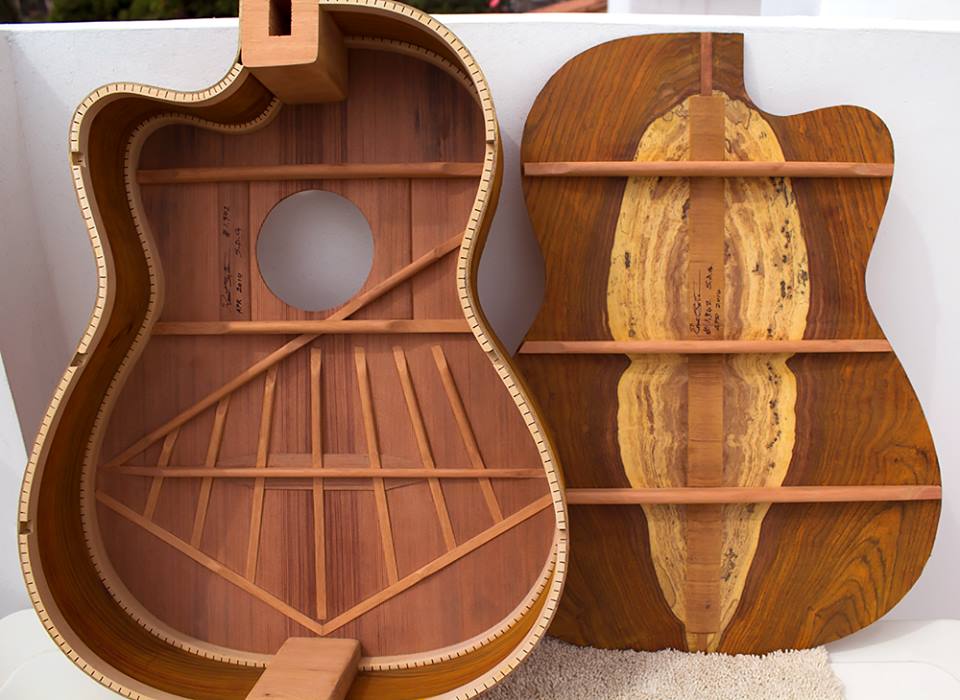
Abanico Hauser variación Bellucci
Cada luthier utiliza un plano con todas las medidas de cada pieza de madera a ser encolada. Los planos se pueden adquiridos y solo es cuestión de decidir qué modelo de guitarra quieres construir.
Los constructores de guitarras utilizamos las herramientas básicas de los carpinteros. Todas las partes, excepto el mango y la cabeza que son esculpidos, son rectas y, para doblar la madera de los aros a la forma tan característica de la cintura de una mujer, se requiere de un hierro calentador (foto)
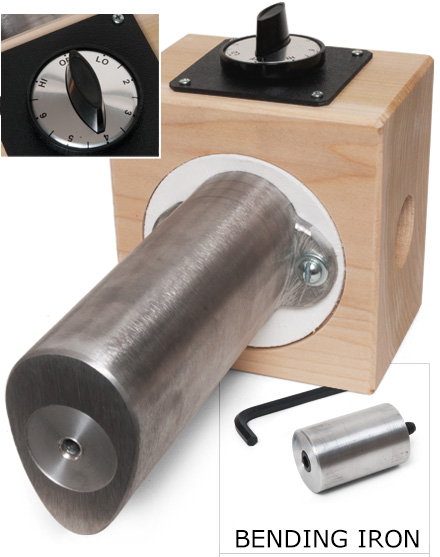
Los filetes, ribetes, se encajan usando cuchillos bien afilados o herramientas eléctricas como la de la foto. AQUI
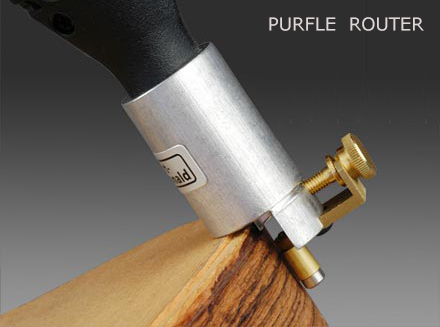
Fresadora eléctrica Purfle (Marquetería)
Cuanto más delgada es la parte tapa del instrumento, se obtendrá un somico más potente. Cuanto más espesa la tapa, se obtendrá un sonido más calido y maleable. La parte más esencial en la fabricación de una guitarra de concierto, es la tapa armónica. El Español Antonio de Torres dió con las medidas justas para crear la primera gran guitarra moderna. El Aleman Hermann Hauser, las perfeccionó aún más y, sus guitarras, son consideradas las mejores jamás construídas. No hubiesemos tenido a un Andrés segovia o a un Narciso Yepes, de no haber sido por estos dos grandes baluartes de la lutería.
La Marquetería le agrega belleza al instrumento y es el tipo de trabajo que sólo unos pocos luthiers extremadamente talentosos pueden lograr. Un instrumento bello, inspira al interprete.
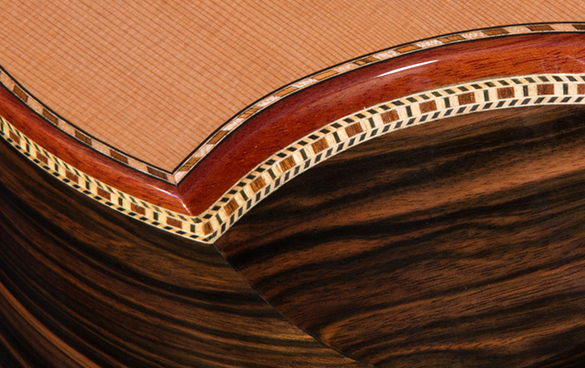
Marquetería de las guitarras Bellucci
La caja de resonancia es la fuente de amplificación del sonido producido por la tapa. El Cedro Canadiense, la Secoya Californiana y el Pino Italiano son las maderas favoritas para la tapa armónica de la guitarra. El Pino envejece mucho mejor que el Cedro y por esto es preferido por los luthiers. Si los Stradivari no hubiesen sido fabricados con Pino, no hubiesen sonado tan bién como siguen sonando hasta el día de hoy. Los artesanos buscamos árboles que hayan crecido lentamente, generalmente y estos se encuentran en montañas altas y frías. La razón es que la densidad de la madera y las fibras de la madera serán mayores en condiciones de frío y escasez de oxígeno. Los Pinos Italianos son generalmente los árboles que crecen en las alturas. El artesano experimentado, puede conocer la densidad de la madera golpeándola suavemente con los nudillos de la mano. Los vendedores especializados en maderas, traen las maderas de los bosques.
Los luthiers solo podemos fabricar unas pocas docenas de guitarras al año y esto permite muy poca experimentación de tipo científico. Esto hará que la lutería siga siendo más un arte que una ciencia.
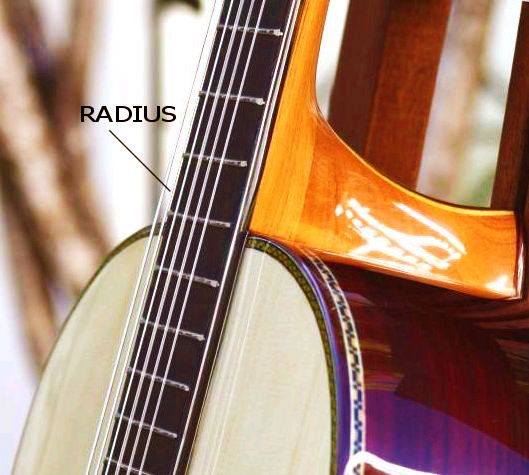
El diapasón con Radio
La mayoría no necesita gastar más de 600 Euros para tocar, tocar bien, rara vez tiene que ver con el precio del instrumento.
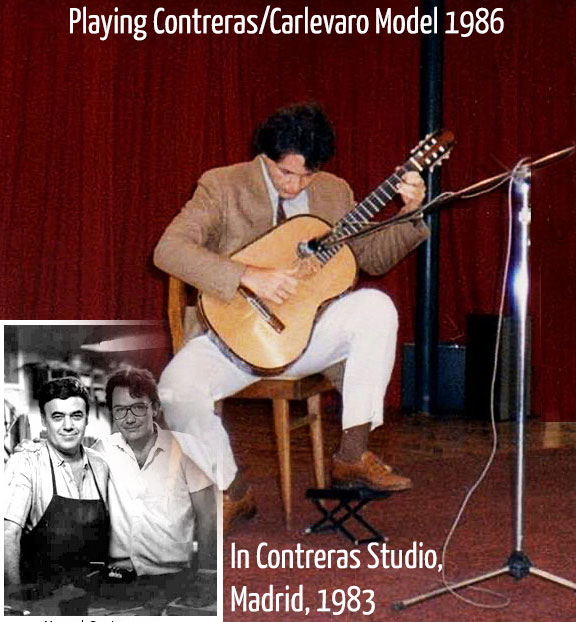
Los instrumentos artesanales son muy caros porque la mayoría de los luthiers solo construimos unos pocos instrumentos al año, y la ecuación no encierra misterios: hay que pagar las cuentas. Una guitarra de concierto artesanal, lleva aproximadamente 300 horas de trabajo.
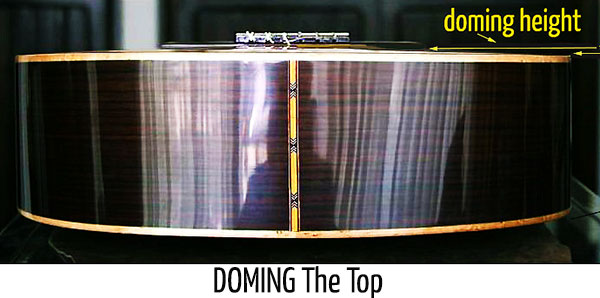
La tapa armónica "abovedada"
La selección de la madera es quizás la parte más importante del proceso de construcción. Hoy se sabe que la madera utilizada por Stradivari para sus violines entre 1700 y 1720 se construyeron usando Pinos que crecieron en lo que los científicos llaman una micro edad de hielo que golpeó a Europa desde mediados del siglo XV hasta mediados del siglo XIX. Este fenómeno hizo que los árboles crezcan mucho más lentamente de lo normal. Grissino-Mayer en Tennessee y el Dr. Lloyd Burckle en Columbia sugieren: " Una pequeña edad de hielo que se apoderó de Europa desde mediados del siglo XV hasta mediados del siglo XIX ralentizó el crecimiento de los árboles y produjo Abetos alpinos extraordinariamente densos para Antonio Stradivari y otros famosos luthiers italianos del siglo XVII". Es fundamental que confíes en tu constructor y en los que le proporcionan la madera.
El sentido común, desafortunadamente, no es ya tan común, pero ten en cuenta que no necesitas gastar una fortuna en una guitarra si no piensas concursar a nivel internacional y subir a grandes escenarios de concierto.
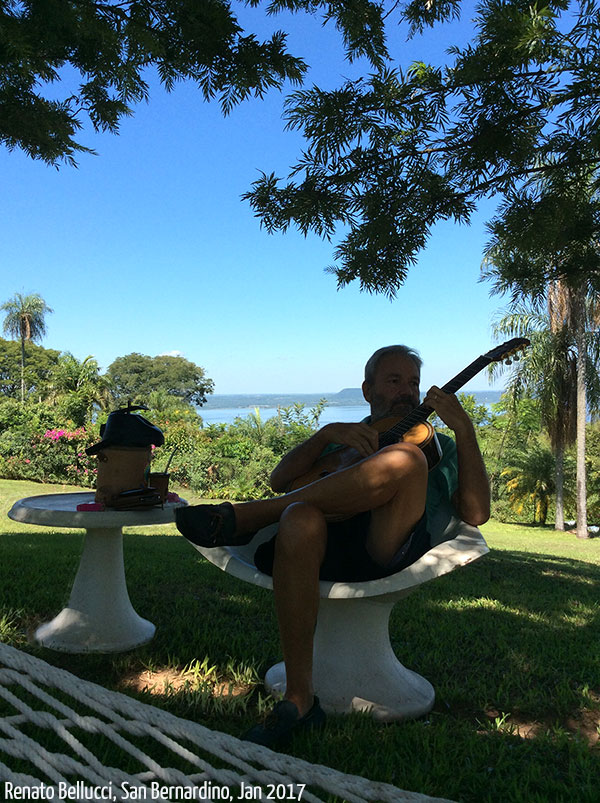
The continuation of this class is in the members area, become a member today.
 Back to Top
Back to Top
